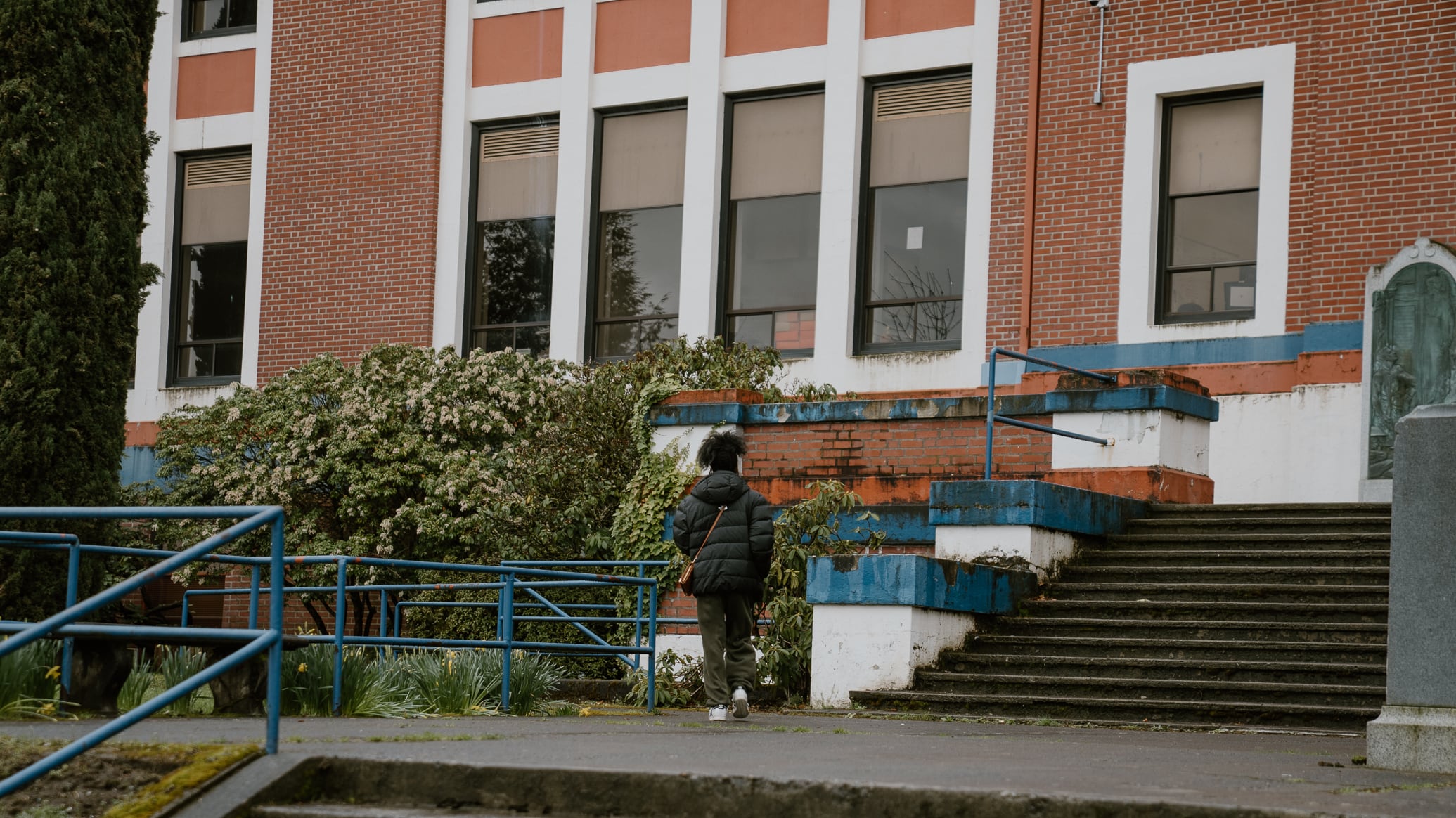A contractor’s report obtained by WW shows Portland Public Schools could open portions of a new Jefferson High School building in the fall of 2028, an entire year ahead of its current rebuilding schedule.
PPS is reckoning with Jefferson’s low enrollment numbers this fall, ahead of a $466 million project to modernize the North Portland school.
District officials have so far communicated their desire to start bolstering Jefferson’s enrollment in the fall of 2027 (the high school class of 2031) while the school is undergoing active construction. It’s a pressing problem, given that Jefferson in the current academic year reported just 391 students.
In meetings to engage the public, the district has found itself trapped in a vicious cycle: Families don’t want their kids moved into one of the most seismically unsafe buildings in PPS’s portfolio—or into an active construction zone—but if enrollment at Jefferson doesn’t grow quickly, the school won’t be able to offer robust programming.
“In order to build the upper-division classes, you need to start by having enough students in the introductory courses,” a PPS frequently asked questions document reads, responding to such concerns. “Starting with 9th grade students in 2027 will provide the resources to build the depth of programming that will be ready when students move to the new building as juniors.”
The new report shows that the district may have multiple paths to accelerate Jefferson’s new facility and escape the negative feedback loop.
The long-awaited comprehensive analysis of Jefferson High School is by the Texas-based construction firm Procedeo, and presents options that could open Jefferson months ahead of schedule. In the report, the firm also identified multiple inefficiencies in the district’s operations that could ultimately influence the sky-high costs of PPS’s construction projects.
The report, obtained by WW, offers one particularly compelling option: open portions of the new Jefferson building in the fall of 2028, a year earlier than current estimates, which slate the school for opening in the fall of 2029.
The option, referred to as “Shell”, would allow students to start using the first and second floors of the new Jefferson building beginning in September 2028. Those floors would by then be up to seismic safety standards, a key concern of parents hesitant to send their students into the current building. But it comes with some challenges, notably active construction on floors 3 and 4 and related safety concerns. Under this model, floors 3 and 4 would open to students in September 2029.
The two other options the report presents also accelerate timelines, but not as dramatically. The “Portable Village” option suggests installing portable classrooms on site during construction of the full building, and allows students to move into a completed building by January 2029. But it could increase costs of the project related to portables and other temporary facilities.
A third option, known as “Swing,” would relocate Jefferson off site in August 2026 and expedite the timeline as well. This approach, Procedeo notes, has been unpopular with the Jefferson community, which protested a move to the Marshall campus, preferring to stay on site. Still, if the district moved forward with this option, the building would also be available for use in January 2029, and it comes with fewer associated costs and concerns around portables.
It will be up to the School Board in a future meeting to determine if the district moves forward with any of these options. The board is slated to hear the district’s recommendations in January regarding the sunsetting of dual assignment enrollment. Discussion of the Procedeo report is not currently on any agenda. How new timelines would affect the district’s current dual assignment plan remains an open question.
Pushing the timeline on Jefferson has been a top priority for PPS Superintendent Dr. Kimberlee Armstrong, who has openly acknowledged her desire for the school to be up and running as quickly as possible. (Jefferson’s reconstruction was first approved by voters in 2020; it has in years since faced delays for various reasons.) “I don’t often say publicly, ‘Hey, I initiated this,’” Armstrong told board members at a Sept. 16 School Board facilities and operations committee meeting. But high school cost reductions and acceleration “was a conversation that I started when I was first hired and I stayed on.”
“How can we go faster on Jefferson?” she said then, alluding to this work. “I’ve said that in every public space that I’ve been in. I’ve even said I’m exploring options on how we can accelerate Jefferson. These are things that I’ve been consistently saying since I’ve been selected as superintendent.”
The district’s contract with Procedeo received heavy scrutiny back in September from some Portland School Board members and PPS staff amid a proposal for a contract extension. Some critics advocated that the firm deliver this report ahead of a further contract extension. The district awarded $149,500 to the firm for this work in June, just under the spending threshold that would require board approval.
Notably, the Procedeo report does not touch on cost estimates for each of the options. But it notes that any streamlined timeline for construction on the Jefferson site has the potential to avert cost overruns. “The prolonged schedule also increases exposure to cost escalation, permitting delays, and repeated utility challenges, making this the least efficient and most disruptive option,” it says of the current plan.
The report defines cost implications for the “Shell” option as moderate, “Portable Village” option as high, and the “Swing” option as moderate-high, but it is not immediately clear what those values correspond to.
It also spells out the enrollment challenges PPS is all too familiar with, and which WW reported on in March when it examined whether the district had the enrollment to fill its high schools long term. (“Too Many High Schools,” March 19.)
“We found that the current plan, capacity, and utilization exceed both current and projected student enrollment,” the report reads. “If cost challenges arise in the future, establishing a reasonably sized building and defining alternates would offer a practical solution.”
The Procedeo report also found a number of places where inefficiencies in the district had led to unnecessary costs. It offers recommendations to streamline the Office of School Modernization’s operations, noting that the organization currently lacks decision-making efficiency and standardized processes.
At times, those hiccups have resulted in the “unnecessary duplication of work,” the report notes. “Redundancy creates a perception of overstaffing, when in reality it reflects the inefficiency of the decision-making structure.”
The report further implies that a decision by the School Board last academic year to pause projects and cut costs on three high school modernizations, which led to minimal cost savings, is an example of how minor changes can have “a cascading effect” on timelines and budgets for large-scale projects like Jefferson. (District staff has noted in various memos that the decision to pause projects at times escalated costs.)
“When significant design or scope changes are introduced without fully evaluating their consequences, the project can quickly experience cost overruns and schedule delays,” it reads. “Without a clear understanding of these downstream impacts, decisions may be made that unintentionally compromise the overall project delivery, increase risk, and strain resources.”

